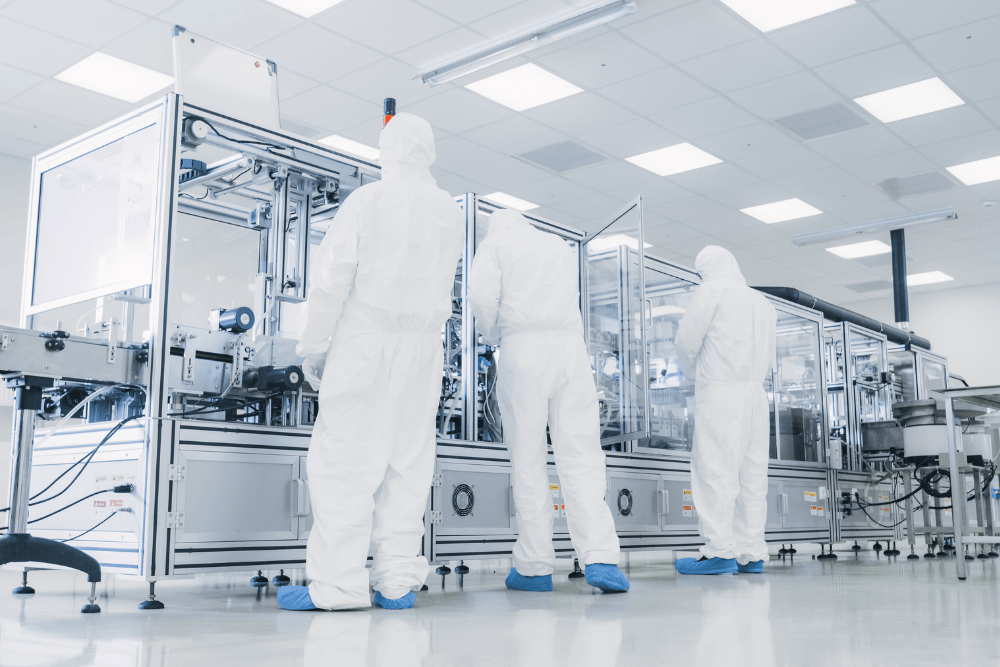Published by NCIA’s Facilities Design Committee
The burgeoning cannabis industry continues to grow and diversify. One sector that’s seen significant expansion is cannabis-infused food production. In this industry, meticulous facility design is crucial to ensure product quality, worker safety, and regulatory compliance.
This article discusses key design considerations for creating an efficient, safe, and regulation-compliant cannabis food production facility.
Begin with the End in Mind
This may seem more philosophical than operational but adopting this mindset early in your design process can help you avoid common pitfalls that seem to plague even experienced cannabis professionals. So, what does it mean to “begin with the end in mind?” It simply means that you need to define a lot of aspects of your business before you begin design. A very simple example of this is: What product(s) do you want to produce in this facility?
This might seem like a simple question, but there is tremendous complexity lurking just below the surface. While a commercial kitchen in a facility such as a restaurant might be a very flexible space allowing for the production of multiple products using the same space and equipment, food manufacturing of shelf-stable products requires a bit more specificity. Let’s pick a single product as an example: Gummies. Here are a few questions and decision points that need to be addressed before diving into design specifics:
- Do you have a recipe for your gummies?
- Does your recipe require specific equipment for production? Does that equipment require ventilation (i.e., a hood)?
- Have you set throughput and volume targets for production (i.e., how many gummies do you want to produce per hour/day/month, etc.?)
- How will your product be packaged?
- Will more than one type of product be produced in this same room/area?
- If so, how do you plan to mitigate cross-contamination risks?
- Have you defined a facility workflow that maps a product’s process from component parts (ingredients) to processing to packaging to storage and delivery?
This is a very incomplete list but demonstrates the fact that a simple product decision comes with a multitude of related decisions that must be made to successfully implement the production process. For example, your decision on your facilities throughput goals directly impacts your equipment choices. Are you doing artisanal, hand-crafted gummies in small batches or are you producing gummies at scale for maximum throughput?
Do you plan to start with one product and eventually expand to other products? Knowing this in advance allows you to strategically plan for those potential line-extensions. The design of an area in your facility to produce one kind of product does not necessarily effectively translate to the production of a different product. The equipment, space-planning, and process-planning for the production of gummy products is very different from the production of baked edibles or chocolate edibles for example. Knowing what you ultimately want to do can help you strategically design for the future and avoid potentially costly retrofits. There is no “one-size-fits-all” cannabis kitchen design.
Another important consideration is the development of Standard Operating Procedures (SOPs). SOPs are a key component of developing Good Manufacturing Processes (GMP) which is becoming increasingly critical to manufacturing in the cannabis industry. Understanding and documenting how things should be done will give you key insights into what is needed in your overall facility design.
This mindset of working backwards from your goal can be applied to almost every aspect of your operation. This includes things such as labor schedules, purchasing guides, order scheduling, storage, packaging, delivery and more. Define your goals and outputs and then work backward from there.
Space Planning
The first crucial consideration is space planning. It is imperative to account for all operational aspects of the facility, from storage and production to packing and shipping. Ensuring there is adequate space for these activities contributes to the workflow efficiency and helps maintain a safe work environment.
Storage areas should be designed to accommodate raw materials, finished products, and waste materials separately. Temperature-controlled areas may be necessary for perishable ingredients or to maintain product stability.
Production areas need sufficient space to house specialized equipment for cannabis food production. These can include extraction machines, distillation other laboratory equipment, infusion systems, and commercial kitchen appliances for food preparation. The areas should also facilitate the movement of employees and materials.
Packing and shipping areas need to accommodate packing materials, finished product cases, and space for shipping operations. Depending on your scale, this may include room for pallets, forklifts, or other necessary equipment.
Workflow Design
An optimized workflow is critical for efficiency and safety. The design of the facility should facilitate a streamlined flow of materials from receiving to shipping. This ‘one-way’ flow can help prevent cross-contamination and reduce movement of personnel and materials.
Special consideration should be given to the workflow around extraction and infusion processes. These are complex and sensitive steps that involve precise control over temperature and pressure. The facilities should be designed to allow for these activities to be conducted safely and efficiently.
Equipment Planning
When planning for equipment, several considerations come into play. Firstly, understanding the power requirements for the extraction, infusion, and food production equipment is paramount. Adequate electrical infrastructure needs to be installed to meet these demands.
Drainage is another critical consideration. Extraction processes can produce significant waste that needs to be safely disposed of. Furthermore, commercial kitchen operations require a professional-grade drainage system.
Lastly, space must be set aside for regular equipment maintenance and potential upgrades. The rapid pace of innovation in the cannabis industry means equipment can quickly become outdated and need replacement.
Food Safety Best Practices
As a food production facility, following best practices for food safety is a must. This includes implementing Hazard Analysis and Critical Control Points (HACCP) plans to identify potential hazards and establish procedures to mitigate them.
Facilities must ensure appropriate hygiene measures, including handwashing stations and employee changing areas. Special attention should be given to allergen management, considering the diversity of ingredients that could be used in cannabis-infused foods.
Proper ventilation is a key factor in maintaining air quality and controlling odors, which can be a significant issue in cannabis production facilities. An effective ventilation system will also help control humidity, which can impact both the quality of the product and the longevity of the equipment.
Putting It All Together
The design of a cannabis food production facility is a complex task requiring a clear understanding of the production process, equipment requirements, safety considerations, and regulatory compliance. Through thoughtful planning and design, producers can build a facility that not only meets these demands but is also flexible enough to adapt to the ever-changing landscape of the cannabis industry.



Follow NCIA
Newsletter
Facebook
Twitter
LinkedIn
Instagram
–